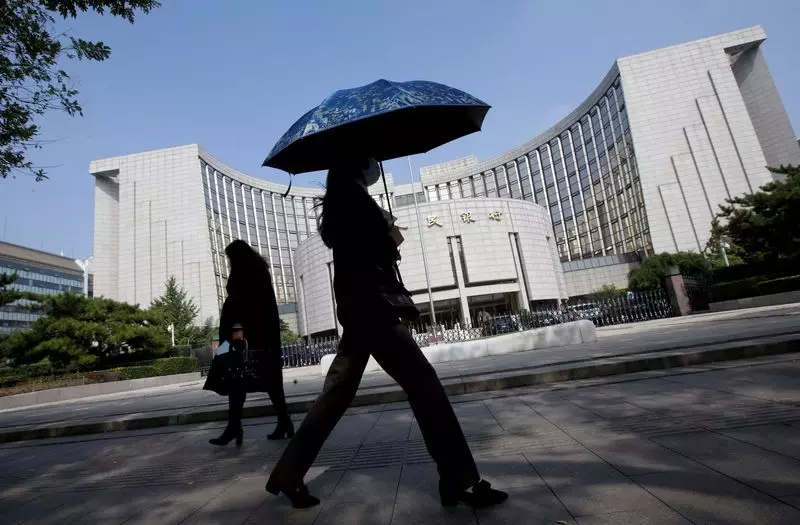China’s economic prospects appear increasingly troubled as we move toward 2024. Recent developments in monetary policy provide an interesting lens through which to assess the future trajectory of growth in the world’s second-largest economy. On a recent Friday, amid widespread anticipation of a reduction in benchmark lending rates, the People’s Bank of China (PBOC) did the unexpected by keeping both the one-year and five-year loan prime rates (LPR) unchanged at 3.35% and 3.85%, respectively. This decision has puzzled many market analysts who were convinced that in the wake of the Federal Reserve’s sharp interest rate cut earlier in the week, China would follow suit.
A survey conducted by Reuters among 39 market participants revealed that a significant 69% expected a rate reduction. The lack of an adjustment in China’s LPR is not only surprising but raises questions about the future direction of economic policy. The sentiment in the market indicates an urgency for action, primarily due to underwhelming economic data released in August. Key indicators such as credit lending activity and other economic markers have disappointed, underscoring the necessity for stimulus measures to revitalize economic growth.
Despite this environment of pressing economic needs, the PBOC has opted for caution. Analysts, such as Xing Zhaopeng from ANZ, have suggested that any future rate cuts will likely form part of a broader economic package rather than standalone actions. This approach indicates a preference for deliberation among Chinese policymakers, who are conscious of the implications of looser monetary policy on the already vulnerable yuan.
The interplay between the Federal Reserve’s monetary policy and China’s economic strategies is critical. The Fed’s decision to cut rates provides China with an opportunity to ease its monetary stance without significant risk to the stability of the yuan. The divergence in policy directions between the United States and China has been compounded by the latter’s struggles with a weakening currency, which has limited Beijing’s ability to navigate the economic landscape effectively.
Reports indicate that President Xi Jinping has called for measures that could bolster economic recovery. Given the challenges posed by faltering economic activity, there is a sense of urgency for Chinese authorities to reinforce measures that align with the government’s official growth targets for 2024, currently set at approximately 5%. However, recent adjustments in growth expectations from global brokerages suggest a muted outlook that could fall short of these targets.
Analysts suggest that the PBOC may soon have to lower rates to alleviate the pressures on economic growth. Commerzbank’s analysis highlights that the lackluster performance of the economy unmistakably calls for such monetary easing. They argue that the recent Fed interest rate cuts present a more favorable backdrop for the PBOC to explore rate reductions.
Nevertheless, the increasing urgency for stimulus must also grapple with risks. An overly aggressive approach to easing could further erode confidence in the yuan, potentially leading to capital outflows and inflationary pressures. Furthermore, the way new and existing loans in China are influenced by the LPR means that any adjustments will have far-reaching consequences for consumers and businesses alike.
As China navigates these turbulent economic conditions, the current state of affairs confirms the complexity and challenges underpinning the country’s monetary policy. The decision to maintain the status quo on interest rates suggests a careful balancing act is at play, one that not only considers domestic economic indicators but is also highly aware of global dynamics, particularly the influences of the US Federal Reserve.
With calls for further stimulus growing louder and mixed signals emerging from economic indicators, all eyes are now on the PBOC. A decisive move, possibly in the form of a reduction in LPRs, could steer China toward a more sustainable economic trajectory. However, as Beijing contemplates its next steps, it must weigh the need for monetary easing against the potential risks. This balancing act will ultimately determine how China moves forward in an increasingly complicated global economic landscape.

